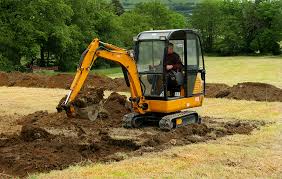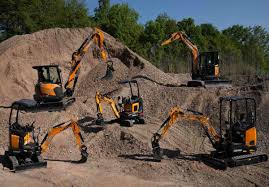
The Complete Guide to Mini Excavators – Everything You Need to Know
Introduction
Mini excavators, also known as compact excavators, have become one of the most essential tools in construction, landscaping, and utility work. Their size, maneuverability, and versatility make them perfect for both small-scale residential projects and professional contracting jobs. If you’re considering buying or renting one, this guide covers everything you need to know.
What is a Mini Excavator?
A mini excavator is a smaller, lighter version of a standard excavator, typically weighing between 1–10 tons. Despite their size, they offer powerful digging capability, precision, and flexibility in tight spaces where larger machines cannot operate.
Key Advantages
-
Compact Size: Perfect for urban projects and residential spaces.
-
Versatility: Compatible with multiple attachments such as augers, grapples, and hydraulic breakers.
-
Fuel Efficiency: Consumes less fuel compared to larger excavators.
-
Lower Operating Costs: Affordable to rent or own, with easier transport.
Common Applications
-
Digging trenches and foundations
-
Landscaping and grading
-
Demolition of small structures
-
Utility and pipe installation
-
Roadside construction
Choosing the Right Mini Excavator
When selecting a mini excavator, consider:
-
Operating Weight – Light (1–2 tons) for residential use, heavier (5–10 tons) for industrial work.
-
Engine Power – Determines speed and digging depth.
-
Attachments – Ensure compatibility with your specific project needs.
-
Transportability – Check towing requirements if you’re moving it often.
Conclusion
Whether you’re a contractor or homeowner, mini excavators provide an excellent balance of efficiency, performance, and cost-effectiveness. They are a must-have in today’s construction and landscaping industries.


